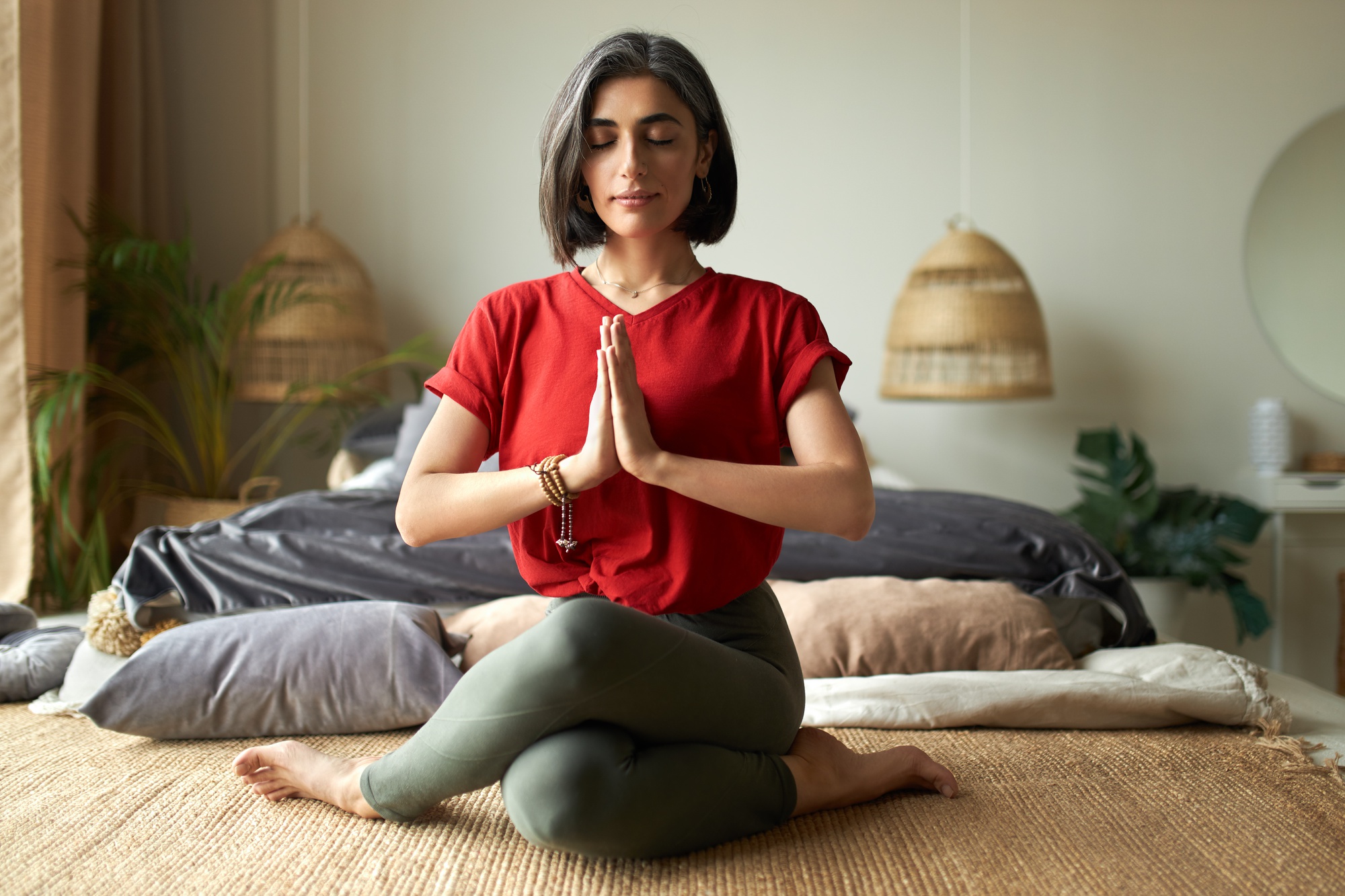Yoga is an old Indian practice that is about the body, the mind, and the spirit. It includes breathing exercises, meditation, and different ways of holding your body. Yoga’s ultimate goal is to bring about spiritual growth, self-realization, and a state of balance and well-being in the body and mind.
In hatha yoga, a set of positions and movements called asanas are used in the physical practice of yoga. These asanas are often done in a certain order and are meant to improve flexibility, strength, and balance. Pranayama breathing practices in yoga, which involve controlling when you inhale and exhale, are thought to help control the body’s energy flow.
Benefits of Yoga
There is a lot of evidence that yoga has a lot of benefits. Here are some of the most common benefits of yoga, each with a short explanation:
Increases adaptability
Yoga involves moving and stretching your body in different ways, which can help you become more flexible over time. Your muscles get stretched and stronger when you hold yoga poses, also called asanas.
With practice, your muscles will become more flexible and able to move in a wider range. Flexibility is important for maintaining good posture, avoiding accidents, and getting better at other activities. It can also help relieve muscle tension and improve circulation.
Increases Strength
Yoga has many benefits, some of which might make you stronger. Many yoga poses ask you to use your body weight. This helps you strengthen your core, upper body, and lower body. In the plank, crow, and downward dog poses, for example, you employ your body weight to strengthen your core, shoulders, and arms.
Yoga can strengthen specific muscles and improve the tone and endurance of the muscles as a whole. When you hold a yoga pose longer, your muscles must work harder. Over time, this could lead to more stamina and stronger muscles.
Lowers stress and anxiety
Yoga has a physical part and a part involving awareness and meditation. These methods can help bring peace, clarity, and perspective to your mind. This can be particularly beneficial to individuals with anxiety because it helps stop their thoughts from racing and gives them a sense of being in charge.
Improves Sleep
When doing yoga, stretching and moving the body might help calm the body and mind and prepare for sleep. This might be especially helpful for people with trouble falling asleep or insomnia. Yoga has a physical part and a part involving awareness and meditation.
These techniques can help you calm your body and mind and find peace. This might make it easier to fall asleep and stay asleep all night. More and more evidence suggests that yoga may have physical effects that help people sleep.
Several studies, for example, have shown that yoga can improve the amount and quality of sleep and make it easier to fall asleep and stay asleep. It’s important to remember that yoga’s effects on sleep can vary from person to person and depend on how the poses are done. Some people might find that some ways or methods of improving sleep work better than others.
Increases awareness
Yoga is a physical practice that helps people feel more present and aware. It involves focusing on the breath and the movements and alignment of the body. This might be especially helpful for people who often get lost in their thoughts and find it hard to be in the present.
In addition to physical exercise, yoga focuses on things like meditation and thinking about yourself. These exercises can help you clear your mind and feel more relaxed. This could lead to a greater ability to be aware and present in everyday life.
Improves Cardiovascular Health
For example, Vinyasa yoga can help your heart and improve your cardiovascular health. In Vinyasa yoga, you move through a set of asanas in a certain order, often while keeping your breath in time. This can be a moderate to hard workout that gets your heart rate up and can help improve your cardiovascular fitness.
Yoga has many benefits for your body but can also help your heart health by reducing stress and anxiety. Stress-relieving and relaxing activities may protect the heart because long-term stress, anxiety, and worry have been linked to a higher risk of heart disease.
Improves energy
The physical and mental practices of yoga can give you more energy and make you feel less tired. The physical parts of yoga, like moving the body and controlling the breath, can help get more blood and oxygen to the muscles and organs. This could give you a boost of energy and make you feel more awake and alert.
Yoga has many benefits for your body but can also give you more energy by reducing stress and anxiety. Long-term stress and worry can drain your energy and make you tired, so doing things that relieve stress and help you relax might give you more energy.
Boosts balance and coordination
Balance poses in yoga are a good way to improve your balance and coordination. In yoga, balance poses aim to keep your center of gravity over a single support point, like one foot or hand. For this, you need strong core muscles and proprioception, which is the sense of where your body is in space.
As you balance poses, your muscles and nervous system improve at finding and keeping your balance. This can lead to better balance and coordination in everyday activities and a lower risk of accidents and injuries like falls.
Reduces long-lasting pain
Yoga has been shown to help ease chronic pain, such as headaches, arthritis, and pain in the lower back. When you do yoga, you stretch and move your body, increasing your flexibility and range of motion. This can help ease chronic pain. Yoga is good for your health in many ways, and it can also help with chronic pain by making you less stressed and anxious.
Pain can be eased by activities that help you relax and reduce stress since stress and anxiety can worsen the pain over time. Mindfulness and meditation techniques in yoga can also help reduce chronic pain by giving you something to do and making you feel calm inside.
Improves the way your lungs work
Yoga exercises that teach you to take deep breaths can help your lungs stay healthy. In yoga pranayama, you carefully control how you breathe in and out through your nose. The effectiveness of the respiratory system can be improved, and the muscles used to breathe can be made stronger. Some benefits of better respiratory function are more air in the lungs, better oxygenation of the body’s cells, and fewer respiratory symptoms like shortness of breath.
Conclusion
Yoga is a discipline that involves the body, the mind, and the spirit. It has many health benefits for both the body and the mind. Yoga uses breathing techniques, physical poses, and meditation to improve flexibility, strength, and balance, reduce stress and anxiety, help people sleep better, and increase awareness.
Yoga may also help with breathing, balance, coordination, energy levels, long-term pain, and heart health. The benefits of yoga can differ for each person, but there is more and more evidence that yoga can improve physical and mental health.




